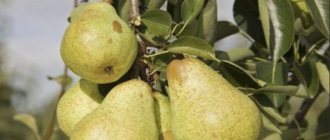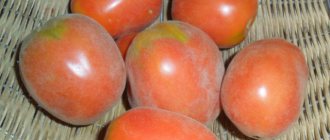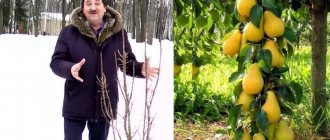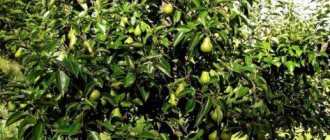Description of the tomato variety Blue Pear
The Blue Pear variety is not a hybrid; the plant produces seeds that are used for further growing of tomatoes. The bush is tall, without limiting the end point it can grow up to 2 m. When cultivated in a greenhouse, the top is broken at a level of 180 cm. In an open area, the recommended stem height is 160 cm. If you do not pinch the top, the tomato will grow until frost to the detriment of the fruit mass.
They form a bush of the Blue Pear variety with two stems, the main shoot and the first strong lateral shoot. Throughout the entire growing season, the plant is tied up and pinched. Mid-season tomato. The first fruits ripen in open ground in mid-July; in a greenhouse this happens a week earlier. The last harvest is harvested in early October.
The concentration of anthocyanin, which is responsible for the color of tomatoes, depends on the degree of lighting
Attention! If there is a deficiency of ultraviolet light, the fruits will turn brown.
Characteristics of the Blue Pear tomato (pictured):
- The stems are medium thick, light green, hard, finely pubescent.
- The foliage is sparse; on one long cutting, up to 5-6 lanceolate-type leaf plates with carved edges can be formed. The upper part is slightly corrugated, with a network of veins, light green, the lower part has a gray tint and a sparse edge.
- Fruit clusters are simple, the first bud is formed after the fourth leaf. The density is 5-8 ovaries.
- The Blue Pear variety is self-pollinating, blooms with small yellow flowers, the ovaries do not fall off, each produces a full-fledged fruit.
Important! The root system does not grow much, which allows you to plant up to 4 tomatoes per 1 m2.
Description of fruits
A special feature of the variety is the varied shape and color of the fruit. It is difficult to find identical tomatoes on one bush. They can be dominantly brown with a slight purple area near the stem, or completely blue with a small brownish-red section at the bottom. Some tomatoes have dark stripes on a lighter background.
Biological characteristics of the Blue Pear fruit:
- the shape of a tomato can be pear-shaped, oval, slightly flat, round, divided into several lobes;
- average weight - 90 g, on the first clusters there are specimens up to 200 g, the last ripening tomatoes - 60 g, on the remaining bunches - 80-120 g;
- the surface near the stalk is ribbed;
- the peel is thin, dense, glossy, not subject to mechanical stress during transportation;
- The pulp is dark cherry, juicy, dense, without voids. The seed chambers are small, there are not many seeds.
Important! Blue pear is a salad variety: the taste is balanced, the concentration of sugars and acids is the same.
The nightshade smell of Blue Pear fruits is moderately pronounced
Growing large and long tomatoes
Seeds of Minusinsk tomatoes cannot be sown directly into the ground. They must be grown by seedlings, otherwise it will not be possible to achieve good germination of the seed. It is necessary to start preparing seedlings 60 days before transplanting young plants to a permanent place of growth. To grow seedlings, it is recommended to use special deep boxes, peat boxes or flowerpots; it is better to take ready-made universal soil for this purpose. It is necessary to ensure that the soil temperature does not fall below +22 degrees, otherwise the seedlings may die.
In the open ground
It is recommended to sow the seeds of this hybrid for seedlings in early or mid-March. To grow young viable plants you need:
Properly prepare a glass of seeds for planting. To do this, they need to be placed in a cloth moistened with warm, pure water for a day.
Prepare the soil for seedlings. If you use a ready-made mixture from the store, just bake it in the oven
It is important that its temperature is not lower than 22 degrees at the time of sowing the seed. If you use soil collected from your own local area, it must first be treated with a weak solution of potassium permanganate to disinfect it. You can read about the proper cultivation of tomatoes in open ground in this material.
You can read about the proper cultivation of tomatoes in open ground in this material.
- Seeds are sown in seedling pots at a distance of 2 cm from each other, they are buried 1 cm into the ground. After this, the seedlings are watered and covered with film or glass.
- After the first shoots appear in the pots, the film will need to be removed. The seedlings themselves should then be watered once a week. Also during this period it is necessary to create temperature fluctuations for tomatoes. Boxes with them should be frequently moved from one place to another so that the temperature readings change. This needs to be done daily.
- As soon as the plants have 2 true leaves, the seedlings need to be pricked. Viable, strong plants should be planted in separate pots. Two weeks after this, the plants are fed with a nitrophoska solution.
- Before transplanting tomatoes to a permanent growing location, the crop must be hardened off. To begin with, flowerpots with young tomatoes should be taken outside for an hour; over time, this time should be increased.
- As the bush grows, it needs to be pinched. The top must be trimmed so that it produces shoots. The side branches must be gradually cut off so that they do not take away the vitality of the plant.
After the plant has at least 8 leaves and one true inflorescence, it needs to be transplanted to a permanent place of growth. Small holes up to 12 cm deep are prepared for plants. They are arranged in a checkerboard pattern so that there are no more than 3 plants per 1 square meter. The tomatoes are transplanted into holes together with a lump of earth, dug in, leaving a small depression around the plant, and watered again.
After planting the plants on the ground, they need to be provided with the following care:
- plucking a bush;
- mulching the soil;
- watering at least once a week;
- fertilizing with mineral fertilizers 2 times during the flowering period and 2 times during the growing season.
Characteristics of tomato Blue pear
The variety is not grown for the food industry or for commercial purposes in farmers' fields. There is no planting material available for free sale on the seed market. You can purchase seeds of the Blue Pear variety from the originator or lovers of exotic tomatoes. The plant is characterized by good stress resistance and does not respond to temperature changes. If damaged by return frosts, it is quickly restored.
Blue pear tomato yield and what affects it
Blue pear is a tall tomato. Six or more fruit clusters can form on one stem. The variety has high productivity. On average, about 20 kg are harvested from 1 m2; in greenhouse conditions, the figure is 3-5 kg higher.
Fruiting in closed structures will be stable if the watering regime is observed and fertilizing is applied. In an open area, the indicator is affected by the sufficiency of lighting and the absence of stagnant water in the soil. To increase the yield, it is necessary to remove the brushes from which the crop was harvested and the leaves, and be sure to pinching so that the nutrients go not to the growth of green mass, but to the formation of tomatoes.
Resistance to diseases and pests
The blue pear variety is characterized by good resistance to infections. If agricultural practices and preventive treatment are followed in the greenhouse, the plant practically does not get sick. On unprotected soil, infection with tobacco mosaic and late blight is possible.
Of the pests, the main threat to Blue Pear tomatoes are spider mites and aphids
Area of application of fruits
Tomatoes are universal in use. Used to prepare salad, included in assorted vegetables. Processed into juice, puree or ketchup. The size of the fruit allows the tomatoes to be used whole for canning. They tolerate heat treatment well and maintain integrity.
History of selection
The Blue Pear tomato is a collectible original variety, bred by the Ukrainian breeder R. Dukhov. Along with him, he developed 28 more varieties of tomatoes, which often took prizes at various festivals.
The variety is not registered in the register of breeding achievements of Russia, but the seeds are distributed among experienced gardeners and amateurs. It can be grown in different regions, mainly in greenhouses. It can also be cultivated in open ground conditions.
Advantages and disadvantages
Blue pear is not much different from common indeterminate varieties of tomatoes with a simple structure of the fruit cluster. The advantages include:
- high productivity;
- the ability to grow in any way;
- good immunity;
- universal use of fruits;
- pleasant taste;
- compactness of the bush, insignificant foliage;
- standard agricultural technology.
Important! The crop has one drawback: tomatoes can crack if over-hydrated.
Features of planting and care
Tomatoes are grown in seedlings. Seeds collected from tomatoes grown on the site remain viable for up to 3 years. The Blue Pear variety is not prone to degeneration. Before sowing, the collected material is placed in an antifungal drug or manganese solution for 2-3 hours.
Seedlings are planted in April:
- The containers are filled with fertile substrate that has previously been calcined.
- Deepen the furrows by 1.5 cm and spread the seeds every 1 cm, cover with substrate, and moisten.
- The containers are covered with film, and after germination the covering material is removed.
When the plant forms three leaves, it is picked
When the soil warms up to +17 0C and the weather stabilizes, seedlings of the Blue Pear variety are planted on the plot. In each climate zone, planting dates are individual. They stretch throughout May. It can be placed in the greenhouse at the end of April.
Landing:
- The soil is dug up, complex mineral fertilizer and compost are applied.
- You can plant seedlings in separate holes or in a continuous furrow at a distance of 40 cm.
- The tomato is placed at a right angle so that the stem and roots lie on the ground, cover with leaves, and water.
When buds appear on the tomato, it is hilled up, a bush is formed and the soil is covered with mulch.
Agricultural technology of tomato variety Blue Pear:
- Weeds are removed when they first sprout.
- If there is no mulch, loosen the soil near the bushes.
- Fertilizing is a prerequisite for growing Blue Pear tomato. Fertilizers are applied from the moment of budding until the end of fruiting. Alternate superphosphate, potash, and phosphorus, maintaining an interval of 20 days. Liquid organic matter is given every week.
- Water the tomato at the root every evening. It will take approximately 7 liters for each bush.
The stems are constantly tied up, the lateral shoots, lower leaves and empty brushes are removed.
Agricultural technology taking into account cultural characteristics
Most gardeners grow tomatoes in seedlings. To obtain a bountiful harvest, a number of rules are taken into account:
- seeds are sown in early March;
- seedlings are moved to beds in the garden when they reach the age of 55 - 60 days;
- For tomatoes, select a place with good daylight;
- Stepchildren are removed from the bush until 2 - 3 stems are formed;
- the tomato is fixed on a support regardless of the growing location (greenhouse or open ground)
- when watering 1 plant, use 4–5 liters of liquid.
Advice. In order for tomatoes to have enough light to ripen, no more than 4 bushes should be placed per 1 m2.
Pest and disease control methods
To prevent fungal infection, the plant is treated with copper sulfate after hilling. During the period when the ovaries appear, they are sprayed with Bordeaux mixture. Apply treatment with any of the means when the fruits reach milky ripeness.
When the first signs of infection appear, the irrigation regime is adjusted. “Fitosporin” is used against late blight, and “Novosil” is used against tobacco mosaic virus. Severely affected areas are cut off and removed from the garden bed. At the first signs of the spread of spider mites, the Blue Pear variety is sprayed with Actellik.
If aphids appear, the leaves with insects are cut off, and the entire bush is treated with Aktara.











